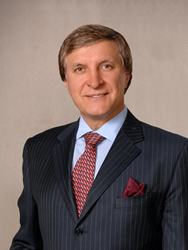Dr. Rod J. Rohrich and Colleagues Study Rare Occurrences of Blindness Caused by Use of Facial Fillers


Dallas, Texas (PRWEB) April 01, 2015
Dr. Rod J. Rohrich, Dallas plastic surgeon and Distinguished Teaching Professor of the Department of Plastic Surgery at UT Southwestern Medical Center, recently joined with other doctors to review reports of blindness resulting from the use of facial aesthetic fillers in cosmetic surgery. The group published their study, along with ideas for treatment and prevention in the Plastic and Reconstructive Surgery journal.
“We began to see increasing reports of blindness as a result of the use of facial fillers and decided to pool our resources to get a sense of why it was happening and how far reaching the problem is,” Dr. Rohrich said. “We hope this study will encourage plastic surgeons and patients to carefully consider options that prevent and prepare for this potential complication. Patients can help reduce this and other risks by carefully selecting an experienced plastic surgeon to perform these treatments.”
The informal study revealed that cases of blindness from aesthetic filler injections, mostly irreversible, have been reported in Asia, Europe and North America. The study suggests the odds of facial fillers causing blindness are very slim, but when it happens, the odds of permanent blindness are high. Because reports in the medical literature studied were submitted by experienced surgeons, the study’s authors believe the actual incidence of blindness caused by facial fillers could be even higher than indicated.
According to the findings, blindness may occur when a facial filler is accidentally injected into a vein within the complex vascular structure of the face. Blindness results when the filler creates an embolism that cuts off retinal circulation. The study suggests blindness incidences might be rising because medical practitioners new to facial injections may not be aware of extensive variations in vascular facial patterns. Dr. Rohrich and the authors report that autologous fat appears to cause blindness more often than other fillers, and when it does cause blindness it is usually permanent. The study uncovered only a few reports of partial visual recovery when hyaluronic acid fillers and calcium hydroxylapatite fillers were used.
Once a facial embolism occurs, there is a small window of opportunity to break up the blockage before a patient’s vision is permanently damaged. The authors of the study, all medical doctors, encourage urgent management of a blockage, with immediate referral directly to an ophthalmologist or oculoplastic surgeon with whom prearrangements have been made for such an emergency, rather than referring patients to a local emergency room. Because treatment of this type of blindness is usually unsuccessful, the doctors urge prevention, with measures such as using small needles and syringes, so less pressure is produced. In some cases, an immediate injection of hyaluronidase can break up an embolism and prevent blindness, however, this treatment has not been successful with autologous fat fillers.
“Even though this potential emergency is rare, it can cause extreme panic and desperation for patients – and rightly so,” said Dr. Rohrich. “It’s the responsibility of anyone providing facial filler treatments to know the risks and look for simple and safe ways to prevent it and be prepared to attempt to restore vision in the rare cases when it happens.”
About Rod J. Rohrich, M.D., F.A.C.S.
Dr. Rod Rohrich is a Distinguished Teaching Professor and Founding Chairman of the Department of Plastic Surgery at UT Southwestern Medical Center in Dallas, Texas. Dr. Rohrich graduated from Baylor College of Medicine with high honors, and completed residencies at the University of Michigan Medical Center and fellowships at Massachusetts General Hospital/Harvard (hand/microsurgery) and Oxford University (pediatric plastic surgery). He has served as president of the American Society of Plastic Surgeons, the largest organization of board certified plastic surgeons in the world. He repeatedly has been selected by his peers as one of America’s best doctors, and twice has received one of his profession’s highest honors, the Plastic Surgery Educational Foundation Distinguished Service Award, which recognizes his contributions to education in plastic surgery. Dr. Rohrich participates in and has led numerous associations and councils for the advancement of plastic and reconstructive surgery.